11 Ways to Prepare for the Next Market Crash
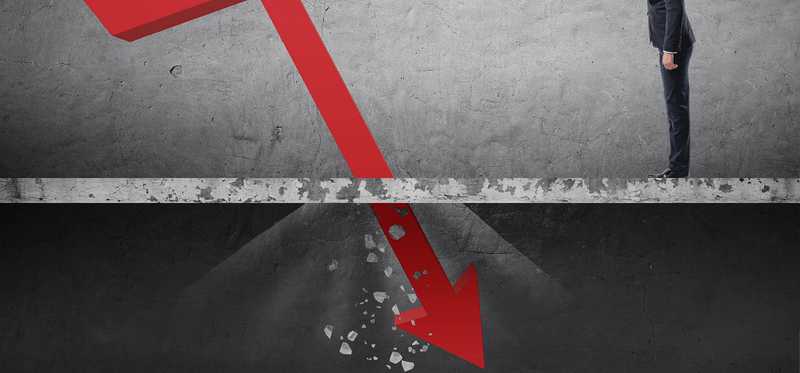
11 Ways to Prepare for the Next Market Crash
The stock market will crash again, but nobody knows when
With history as our guide, there are a few important things we can understand about stock market crashes. We know they happen, and on average about once a decade. But it’s impossible to predict with any degree of accuracy when the next market crash will happen. Just ask anyone who has sold out over the past decade, only to see the S&P 500 race ahead by more than 200% in total returns.
But just because market crashes are unpredictable doesn’t mean you can’t take steps to prepare for it, while still profiting from the run up before the crash. Here are the best 11 ways you can prepare.Previous
Next

Diversify your portfolio
This may seem like the most obvious, overused advice. But the reality is, it can pay off big-time if you’re heavily exposed to certain industries or sectors. One only has to look at the last two market crashes for proof. During the Dot-Com crash from March 2000 to October 2002, the S&P 500 fell 44%, wiping out trillions of dollars of wealth. But people with heavy tech exposure truly took a beating; over the same period, the Nasdaq Composite fell a terrifying 77.9%.
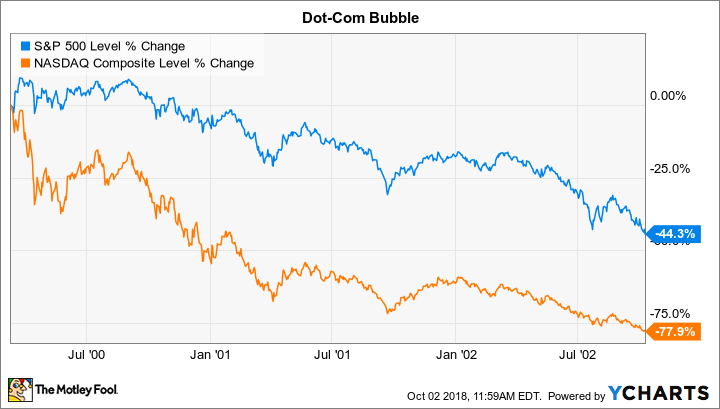
Nearly the same thing happened during the Global Financial Crisis. From the 2007 peak to the 2009 bottom, the S&P 500 fell over 55%, but financial stocks fell more than three-fourths as a class.
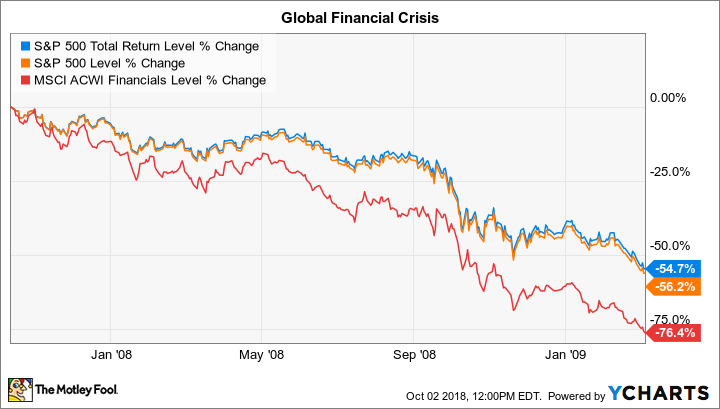
Market crashes are often driven by a single industry. Making sure you’re not overexposed to any one sector can significantly reduce your losses during a market crash.
Previous
Next
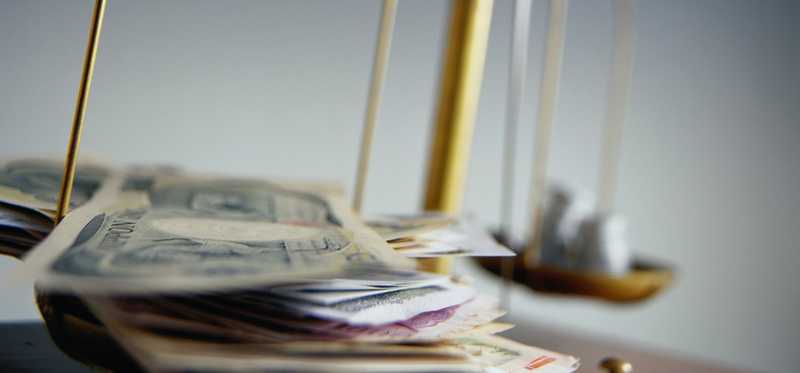
Sell a portion of your biggest winners
It’s generally not a good idea to sell a stock just because it’s gone up. To the contrary, that’s why you bought it, and often it’s our biggest winners that continue to win. But if a single stock becomes a significant portion of your portfolio, it may be time to trim that position back and reduce the risk of something unexpected affecting only that company taking an outsize bite out of your portfolio. Furthermore, the proceeds from trimming your biggest positions can help you prepare for the next market crash in other ways.
Previous
Next

A way to “insure” your biggest investments
Another powerful tool to protect your portfolio from a market crash is options. Specifically, buying “puts” to reduce your downside risk. The short explanation is this: By buying a put contract, you own the right to sell your shares (in 100-share blocks typically) at a certain price in the future, thereby insuring a minimum value for your shares during the length of that option contract.
For instance, let’s say you own 100 shares of ABC Company, trading for $50 per share today, and you wanted to protect your $5,000 investment for the next six months. You could buy a put contract with a $50 “strike” price, and if the stock price fell during that six months, you could execute the option and sell your 100 shares for $50 each, even if the stock fell to $40 or $30 or even $0.
The downside is if the stock doesn’t fall, you’re still out the premium you pay to buy the option, which can be substantial depending on the length of the option and the volatility of the stock.
ALSO READ: 10 Events That Could Cause the Next Stock Market Crash
Previous
Next
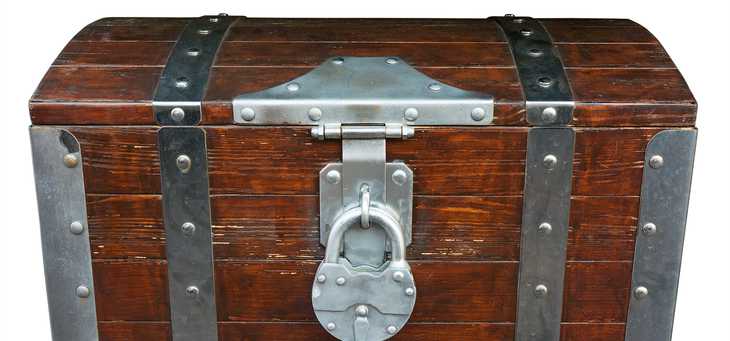
Build up a “war chest” to invest when the market crashes
You’ll never be able to guess when the market is peaking, but knowing when it’s down 25% or more is another story. And having some cash on the side to invest during a market crash is a powerful way to boost your returns.
In general, it’s a good idea to keep this cash position relatively small, usually no more than 10% of your invested portfolio size. This is because, while it might seem smart to have more cash “on the sidelines” to deploy when the market does crash, it means you have less money invested and growing when the market’s going up.
Having too much cash uninvested could do more harm to your long-term wealth creation than good, but keeping a small portion out of stocks and ready to deploy during the next crash is a great way to profit when that crash does happen.
Let’s take a look at some easy ways to build up your cash war chest on the next few slides.
Previous
Next
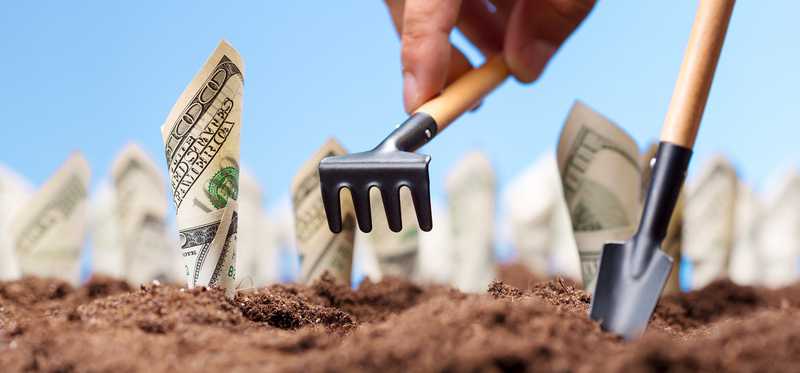
Start the year with a cash contribution to your account
This can be a handy way to make sure you’re keeping a balance between steadily investing in stocks for long-term growth, while also building up a cash position. Whether you’re investing in a taxable brokerage account, or a Roth or Traditional IRA, start the year off with a “cash only” contribution that you’ll put in the account, but won’t deploy into stocks or index funds. This can be especially handy if you make regular monthly contributions.
If you tend to make only one or just a few contributions each year, determine what percentage you want to keep in cash to deploy during a market crash, and earmark that amount up front each year when you make your contributions.
Previous
Next
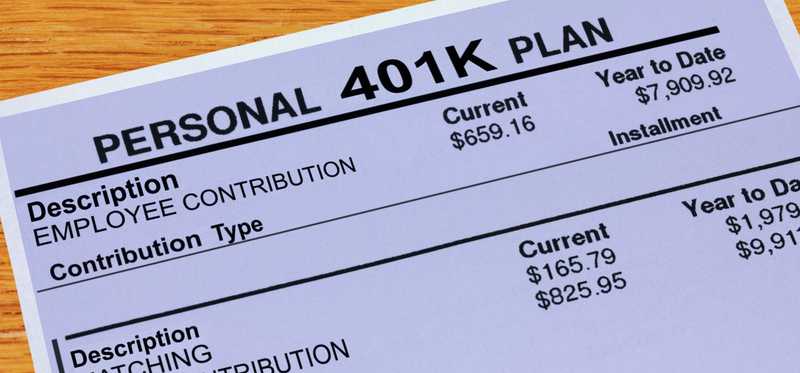
Make cash part of your 401(k) investments
If you contribute to a 401(k) or similar plan at work, you probably have the ability to select cash or a cash-equivalent such as a money market as one of your investment options. If that’s the case, one of the easiest ways to build up a war chest of cash to deploy is to invest the percentage of your 401(k) you’d like to keep in cash into this option. For instance, if you plan to keep 8% of your portfolio in cash you can use to buy when the market crashes, put 8% of your contributions into the cash-equivalent fund.
Over time, this will help you build up a cash position to re-allocate into beaten-down stocks or index funds during a future crash.
Previous
Next

Turn off the DRIPs
This doesn’t have anything to do with leaky pipes (though home maintenance like that can cut your water bill). And it’s actually a big counter to popular investing wisdom, which generally suggests that it’s best to take advantage of the compounding power of automatic dividend reinvestments, or DRIPs.
So why would you want to NOT DRIP? In short, because it’s another way to steadily build up your cash position to take advantage of the next market crash. This is particularly handy if you have, say, a rollover IRA or Roth that you’re not making new contributions to. It may not be much, depending on your portfolio makeup (the S&P 500 yields about 1.8% at recent prices), but this can be a nice way to build up some cash to deploy in the next market crash.
Having extra cash to deploy during a crash is handy, but owning assets that act differently than stocks can also pay off. Let’s take a look at some to consider.
Previous
Next

Make gold a small part of your portfolio
Admittedly, I’m not much of a gold fan. Historically, it has almost always underperformed stocks, and I expect that to generally always be the case over the long-term. But holding assets that act differently than stocks can serve a valuable role (so long as it’s not too big a portion of your portfolio) to reduce market-crash risk.
We can use the Dot-Com and Financial Crisis market crashes to illustrate this. First, the Dot-Com crash.
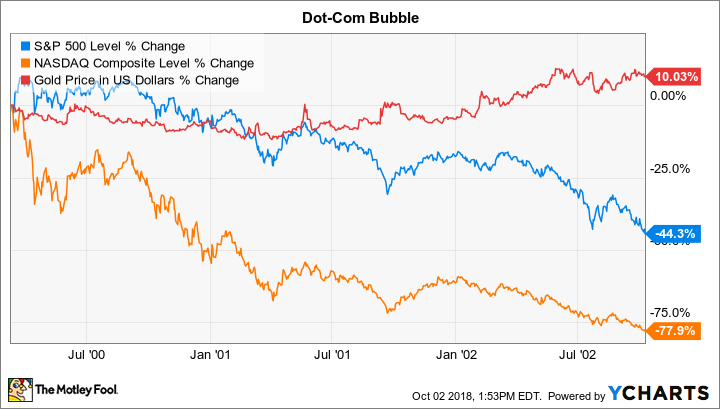
And here’s how gold held up during the Global Financial Crisis.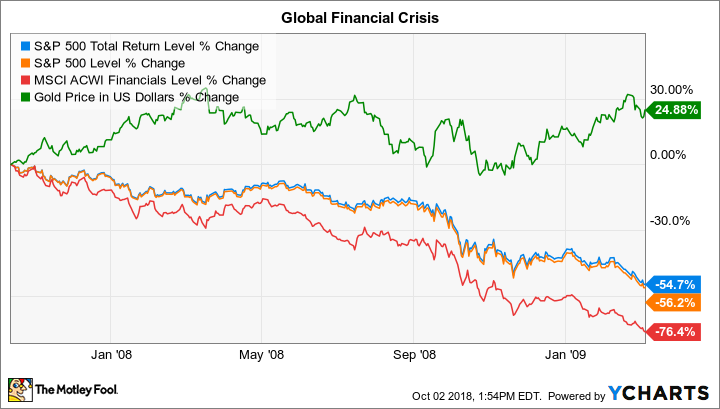
As you can see, in both cases gold not only held up far better than stocks -- especially stocks tied directly to the cause of the market crash -- but actually gained in value.
But the downside is that gold very often underperforms stocks when they do well. One only has to look at gold’s underperformance of the S&P 500 (both with and without dividends) since the 2007 peak to see why it shouldn’t be the cornerstone of your portfolio.
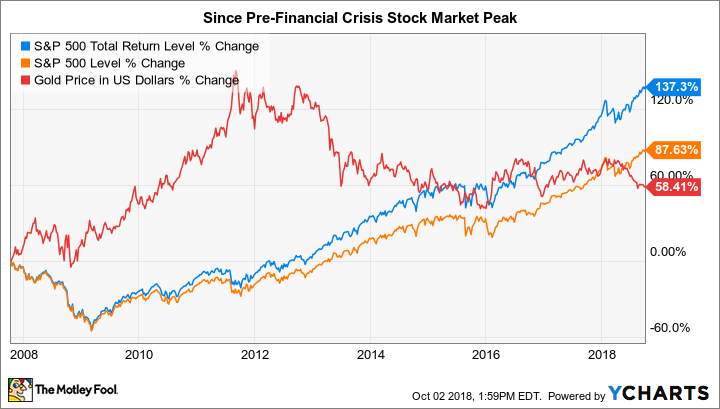
Like cash, it’s a nice asset to hold that probably won’t lose value (and could gain) during a market crash. But holding too much for too long will probably harm your long-term returns versus stocks.
Previous
Next
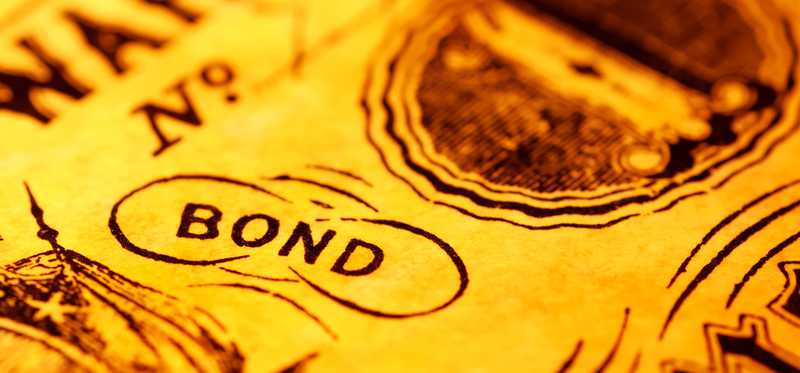
Make bonds part of your long-term portfolio, too
Just like with cash and gold, bonds (or bond funds) typically don’t behave exactly like stocks. This isn’t good over the long-term, since stocks have historically outperformed bonds along with gold and cash over the long-term. But over the short-term, bonds can be a solid way to reduce your exposure to the huge losses of a stock market crash that can be very painful in the short-term.
This is particularly true if you’re inching closer to retirement (or you’re already retired). If this is your situation, bonds can be a great way to protect assets you’ll be counting on for income in the short-term, while also generating better returns than cash and being far more predictable than gold.
In general, the farther you are from retirement, the less bonds you should own. But as you move closer to counting on your nest egg to pay the bills, you should gradually make bonds a bigger portion of the mix to help protect your portfolio from a market crash when you can least-afford it: When you’re taking money out of your portfolio to live on.
Previous
Next

Invest in real estate
Like gold, bonds, and cash, real estate offers another asset class that can behave differently than stocks. It can also offer a solid source of higher income than bond yields or interest on cash, and is probably much easier to invest in than you may think: publicly-traded REITs
In short, REITs -- or real estate investment trusts -- are a class of investments, many of which trade as common stocks, that make it simple to diversity into real estate. By investing in shares of a REIT, or an index fund based on REITs, such as the Vanguard Real Estate ETF (NYSEMKT:VNQ), you can add real estate to your portfolio without having to own and manage property directly.
Investing in uncorrelated assets and building up a cash position for timely investing are great steps to prepare for the next market crash. But there’s another critical move you should also take to make sure you’re ready for the unexpected.
Previous
Next

Build up an emergency fund
Getting ready for the next market crash shouldn’t just be about getting your portfolio ready. If a market crash results in -- or is caused by -- something that affects your industry, don’t get caught unprepared to stay on your feet. Getting blindsided with an unexpected layoff could mean far-bigger worries for you than how your retirement savings is allocated.
With this in mind, one of the most important steps you should take to prepare for the next market crash is to establish ample emergency savings, completely outside of your retirement funds or other investments. The goal is to gradually build up this emergency fund over time to the point that you have enough savings to cover as long as one year’s living expenses. If you’re not there yet, set small goals, such as one month, then three, then six, then one year, and build up your emergency savings over time.
Think about it this way: Do you really want to have to cash out your investments -- when they just fell 30% or more -- to pay bills? Having an emergency fund can keep you from having to sell during a crash -- when you should be buying -- just to pay your bills.
Previous
Next

You may be caught off guard by the next crash, but you can still be prepared
The market is invariably going to crash again. Technically, we’re already “overdue,” based on the typical period of time between one crash and the next. But that doesn’t guarantee it will happen this year, or within the next two or three or even five years.
But if you follow the steps above, you can set up your portfolio to minimize the risk of permanent losses, and build up a war chest to opportunistically buy when stocks crash. Maybe more importantly, building up an emergency fund can help ensure you don’t have to rely on selling your investments during a crash, giving your portfolio time to recover and giving you time to get back on your feet.
Jason Hall has no position in any of the stocks mentioned. The Motley Fool has no position in any of the stocks mentioned. The Motley Fool has a disclosure policy
Previous
Next
Invest Smarter with The Motley Fool
Join Over Half a Million Premium Members Receiving…
- New Stock Picks Each Month
- Detailed Analysis of Companies
- Model Portfolios
- Live Streaming During Market Hours
- And Much More
READ MORE
HOW THE MOTLEY FOOL CAN HELP YOU
-
Premium Investing Guidance
Market beating stocks from our award-winning service
-
The Daily Upside Newsletter
Investment news and high-quality insights delivered straight to your inbox
-
Get Started Investing
You can do it. Successful investing in just a few steps
-
Win at Retirement
Secrets and strategies for the post-work life you want.
-
Find a Broker
Find the right brokerage account for you.
-
Listen to our Podcasts
Hear our experts take on stocks, the market, and how to invest.
Premium Investing Services
Invest better with The Motley Fool. Get stock recommendations, portfolio guidance, and more from The Motley Fool's premium services.